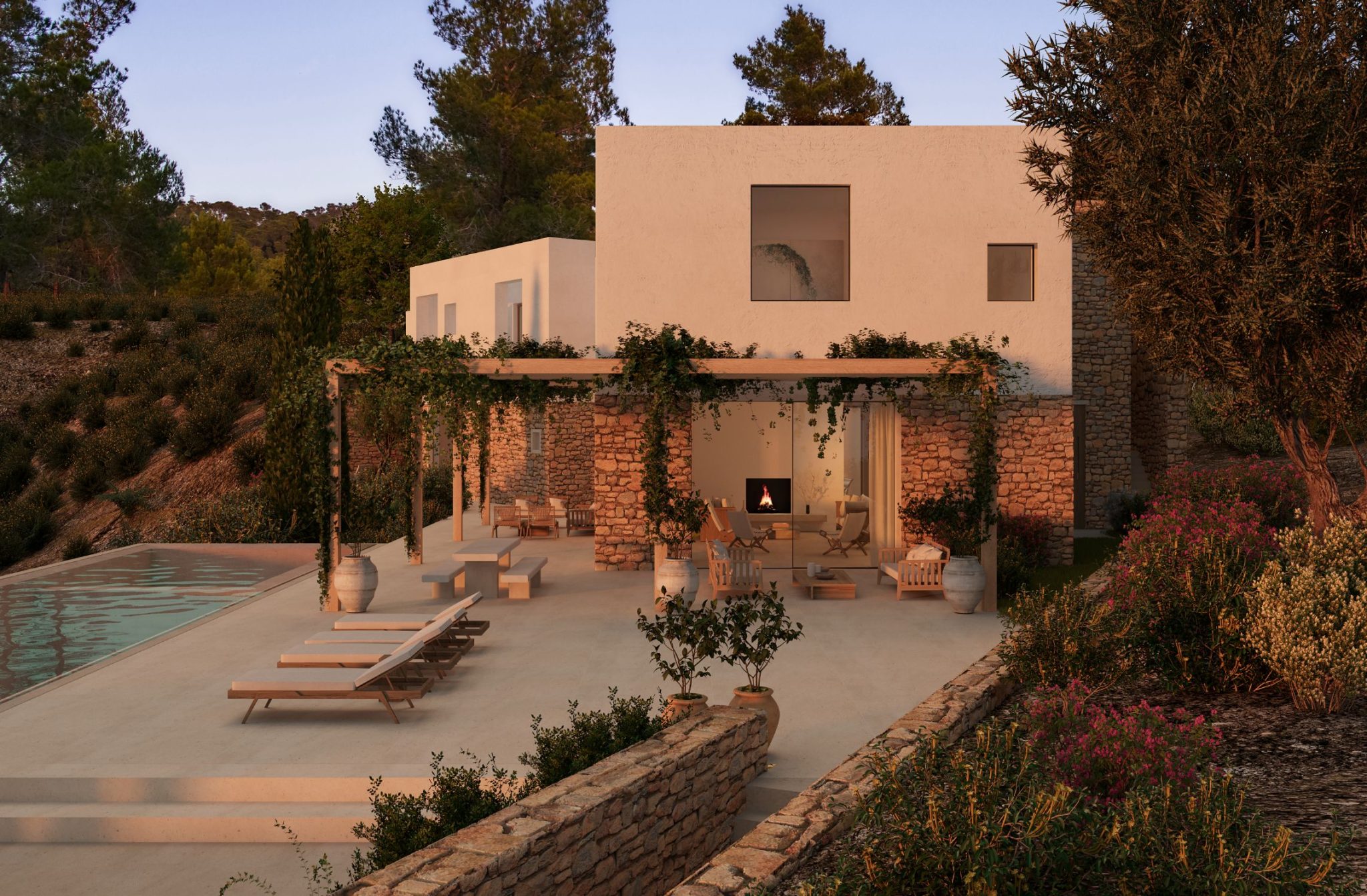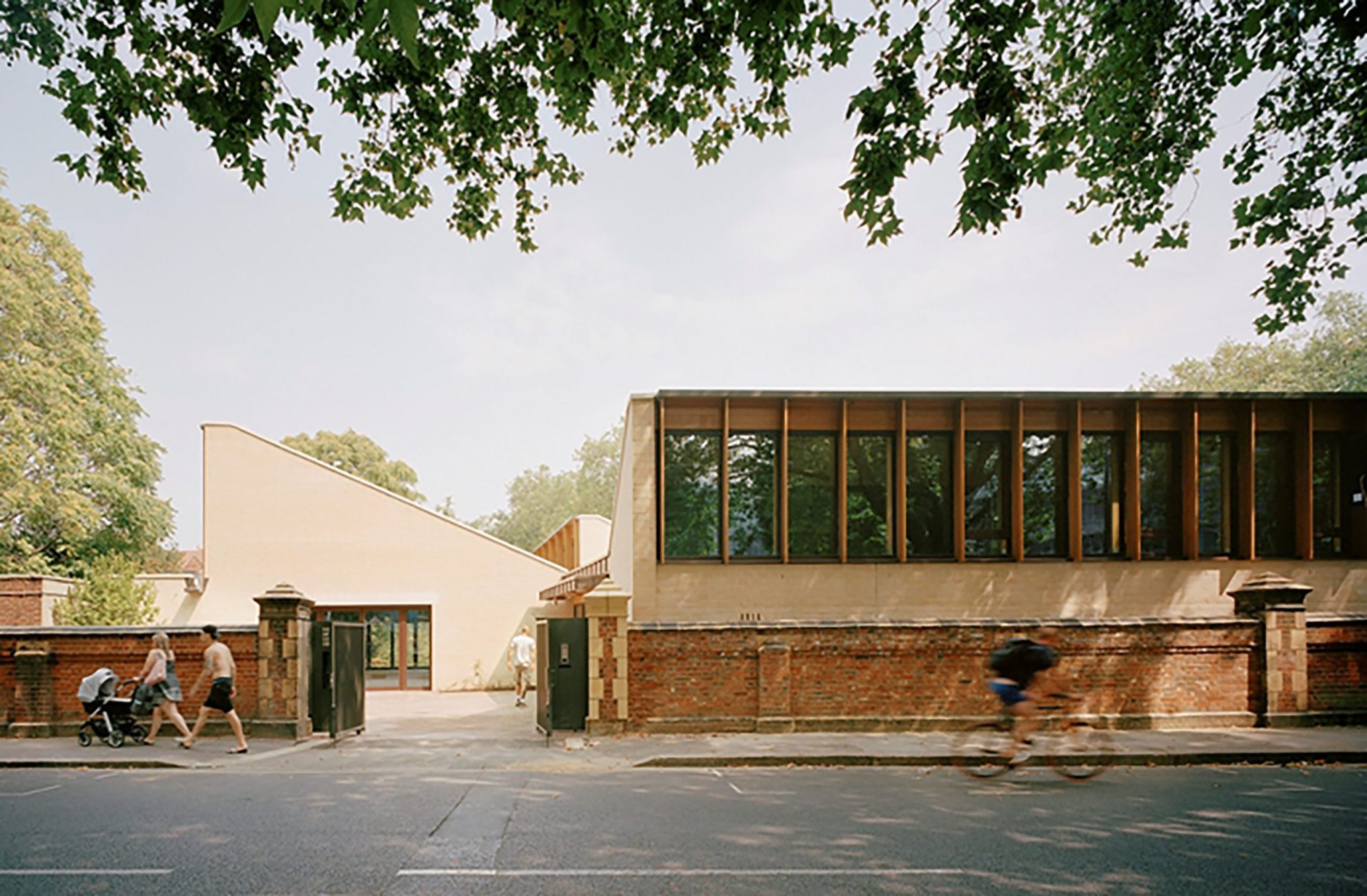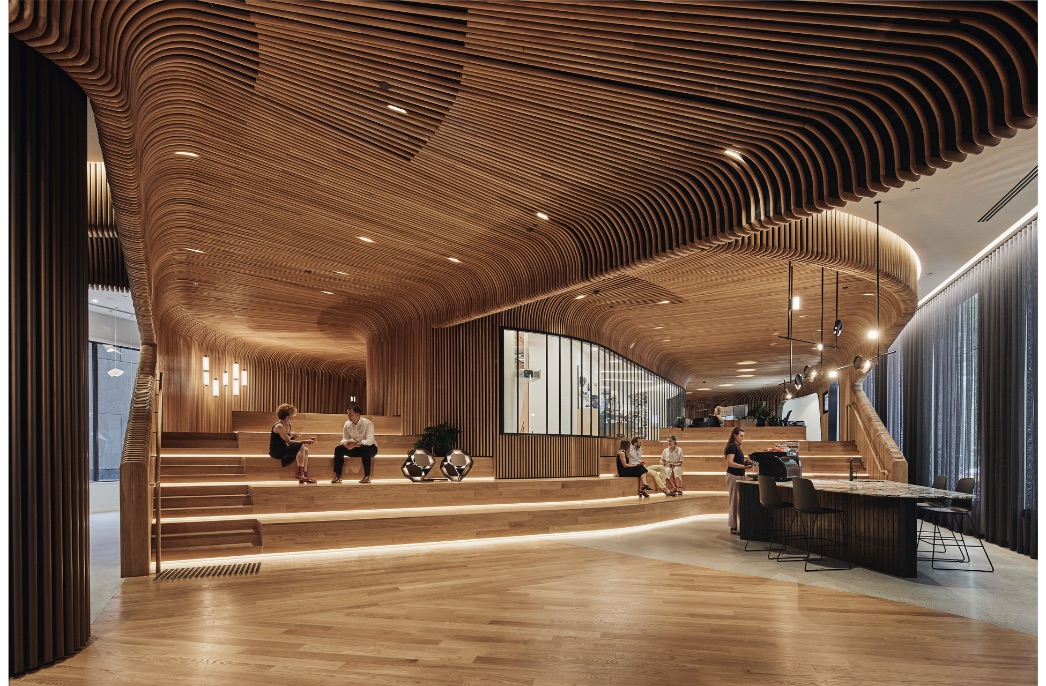
Ten of the best pavilions from Dubai Expo 2020
Ten of the best pavilions from Dubai Expo 2020
Share
Focused on architecture, culture and innovation, the world expo is sometimes called the Olympics of design.
Originally slated to run in 2020, but postponed due to COVID-19 restrictions, the Dubai Expo is the first time the event has been hosted in the Middle East and features 180 country pavilions.
These are our top picks from the Dubai Expo 2020.
The Australia Pavilion by bureau^proberts
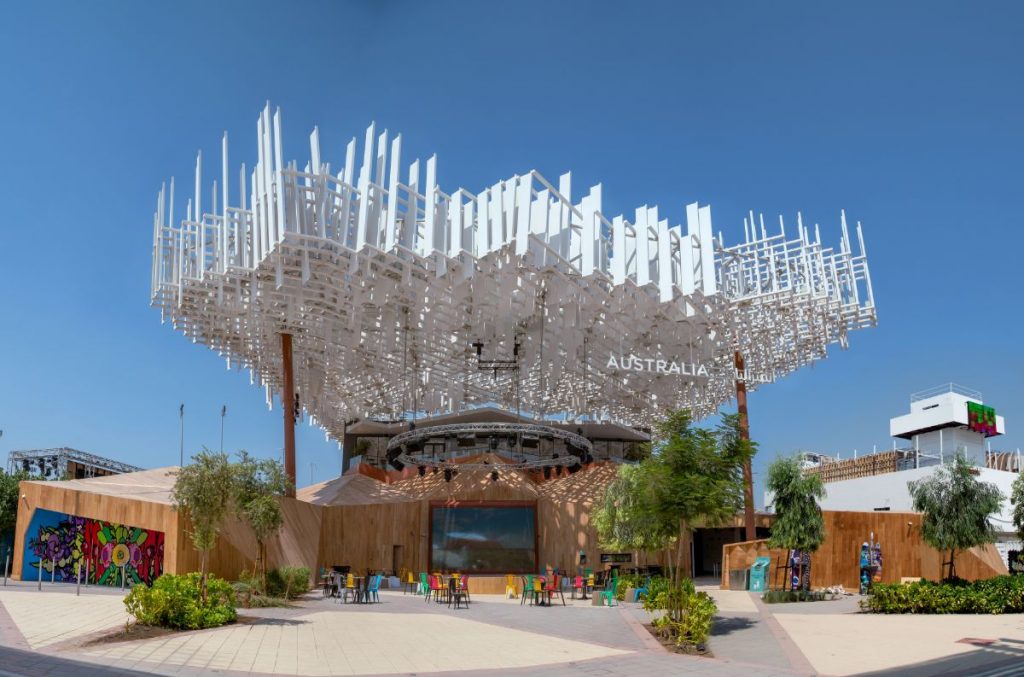
We’d be remiss if we didn’t mention our very own pavilion. While organisers have coped a lot of flack over the merits of having a pavilion its own citizens are unable to visit, the Australia Pavilion is still a striking celebration of our strengths, our multicultural heritage and Indigenous Australian roots… just don’t ask how much it cost because organisers are mum on that too.
(But for reference, the NZ Pavilion was estimated to have cost $94 million).
Read more about the Australia Pavilion.
The Saudi Arabia Pavilion by Boris Micka Associates
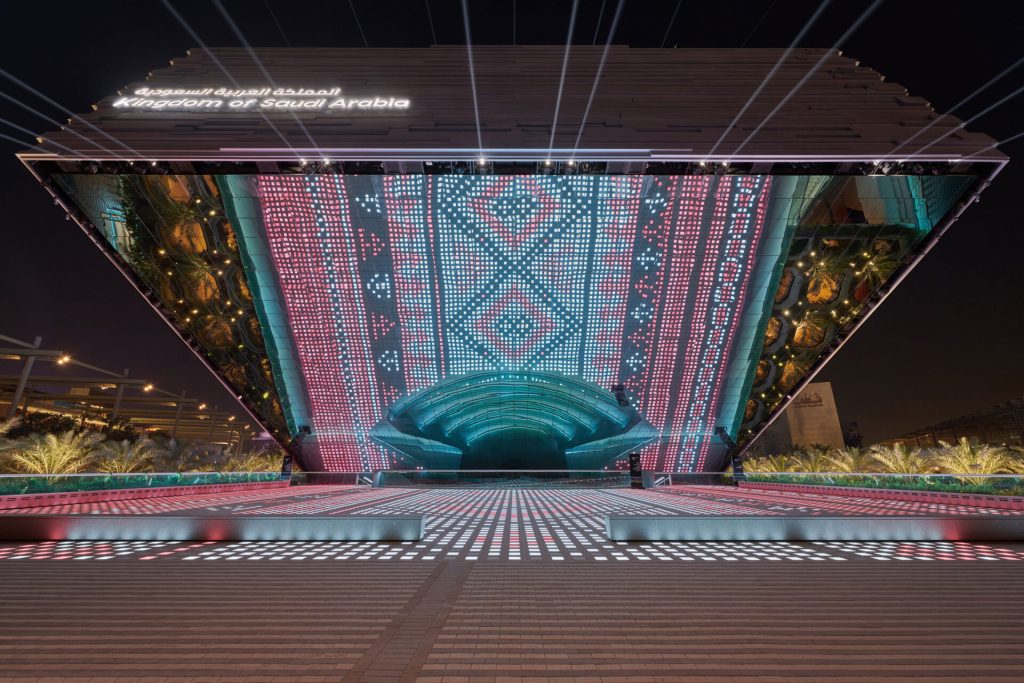
Based out of Spain, Boris Micka Associates is particularly proud of the fact that its pavilion is the largest of this year’s countries. Its daring cantilevered structure is entirely made of glass reflecting all the activities on the plaza. Rising six stories above the ground, the 1,320 square-metre inclined mirrored screen showcases Saudi Arabia’s culture, heritage and landscape, before transforming into a gigantic screen for the evening entertainment.
Discover the Saudi Arabia Pavilion.
The Finnish Pavilion by JKMM Architects
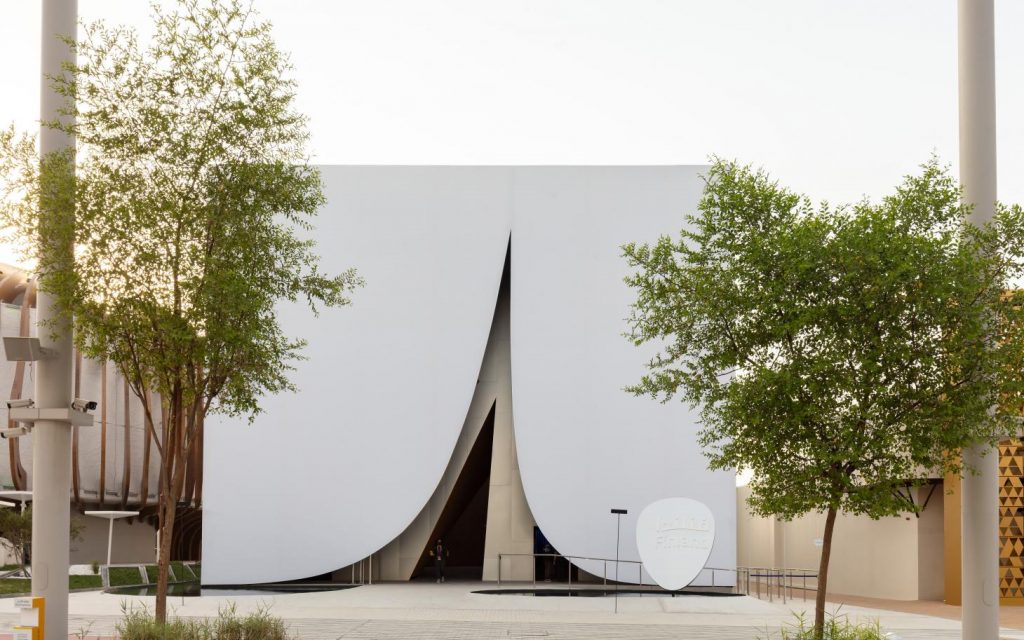
Dubbed lumi or snow in Finnish, this pavilion was inspired by the white layers of the first snow that covers the country at the beginning of winter. This is contrasted by the shape of the structure, which is drawn from a traditional Arabic tent. Inside the pavilion, a deep top lit gorge-like space welcomes visitors. With very few exceptions, all materials and labour were sourced locally.
Discover the Finnish Pavilion.
The Italy Pavilion by Carlo Ratti Architects
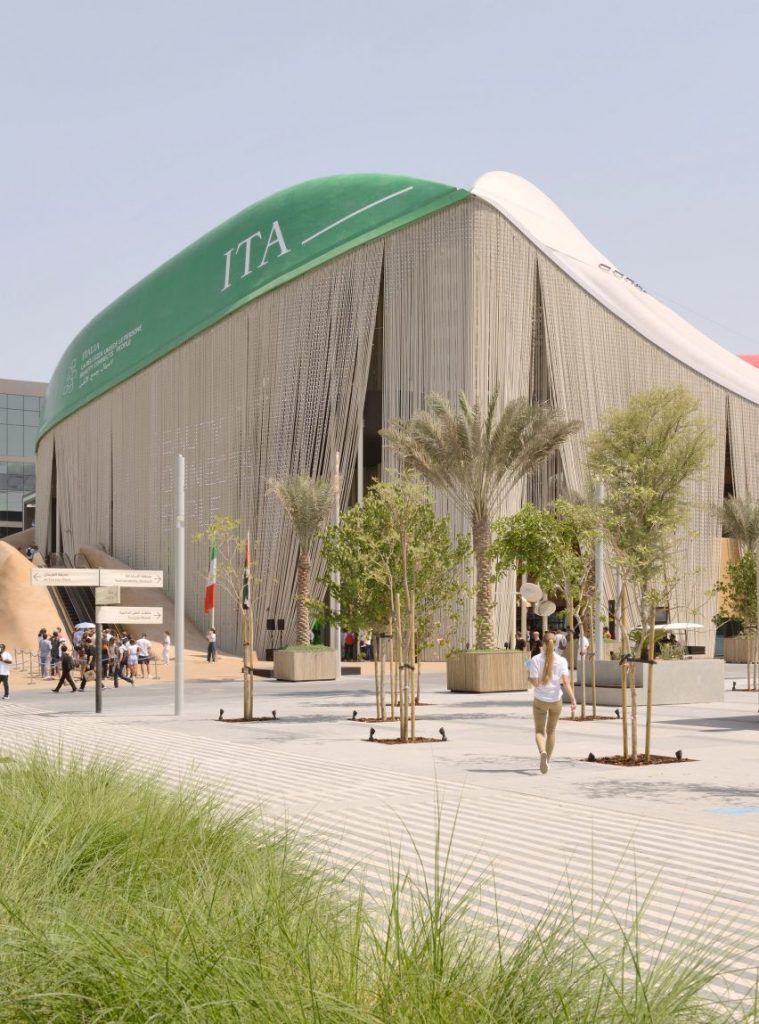
Three boat hulls and a curtain made from 70 kilometres of rope manufactured from recycled plastic define Ratti’s Italy Pavilion. The goal here was to demonstrate how temporary structures do not need to be hugely wasteful. The hulls themselves are coloured red, white and green to represent the Italian flag and after the expo, they will be reused as boats. The pavilion is also air-conditioner free.
The UK Pavilion by Es Devlin
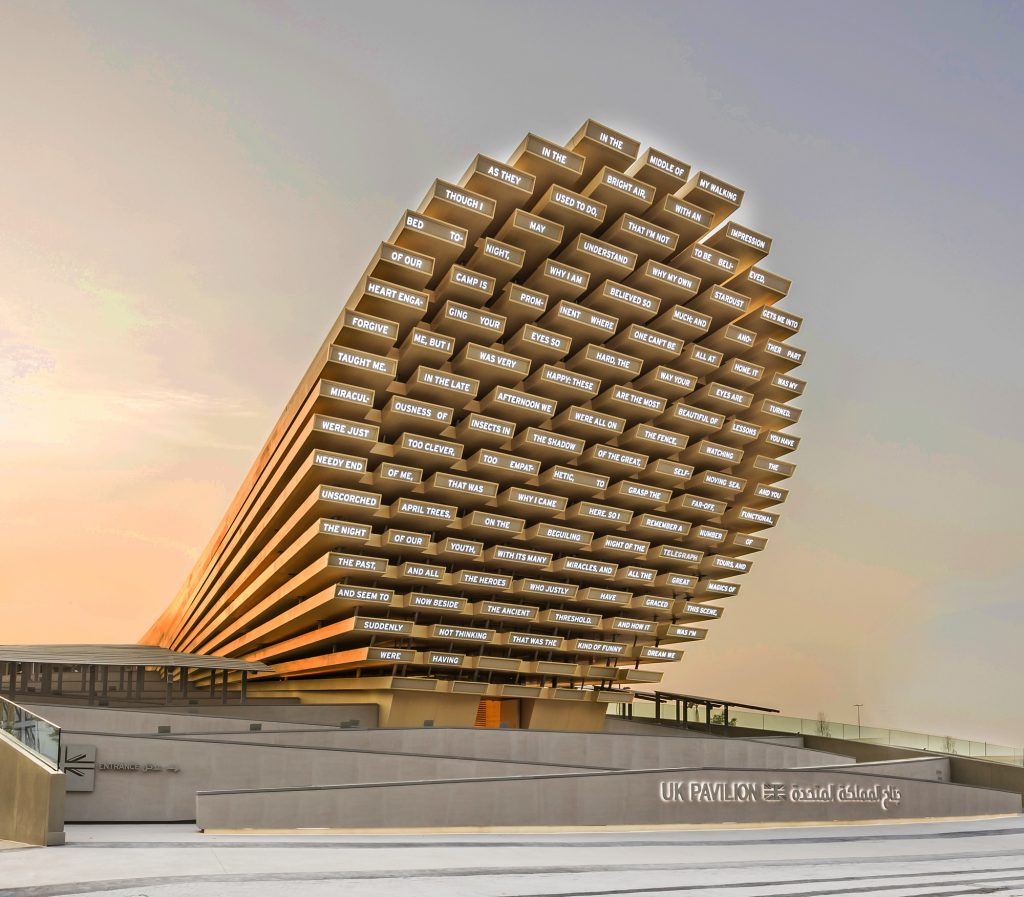
Like all iconic architecture, Devlin’s UK Pavilion elicits strong opinions. The cross-laminated timber cone-shaped pavilion features protruding slats. On them is a poem in LED lights in English and Arabic using words submitted by visitors and generated by AI. The structure, which is the first UK pavilion designed by a female designer, aims to draw attention to both the growing importance of algorithms and the diversity of the UK, but plenty of punters have pointed out that the poem is less lyrical and more gibberish.
The Dutch Pavilion by V8 Architects
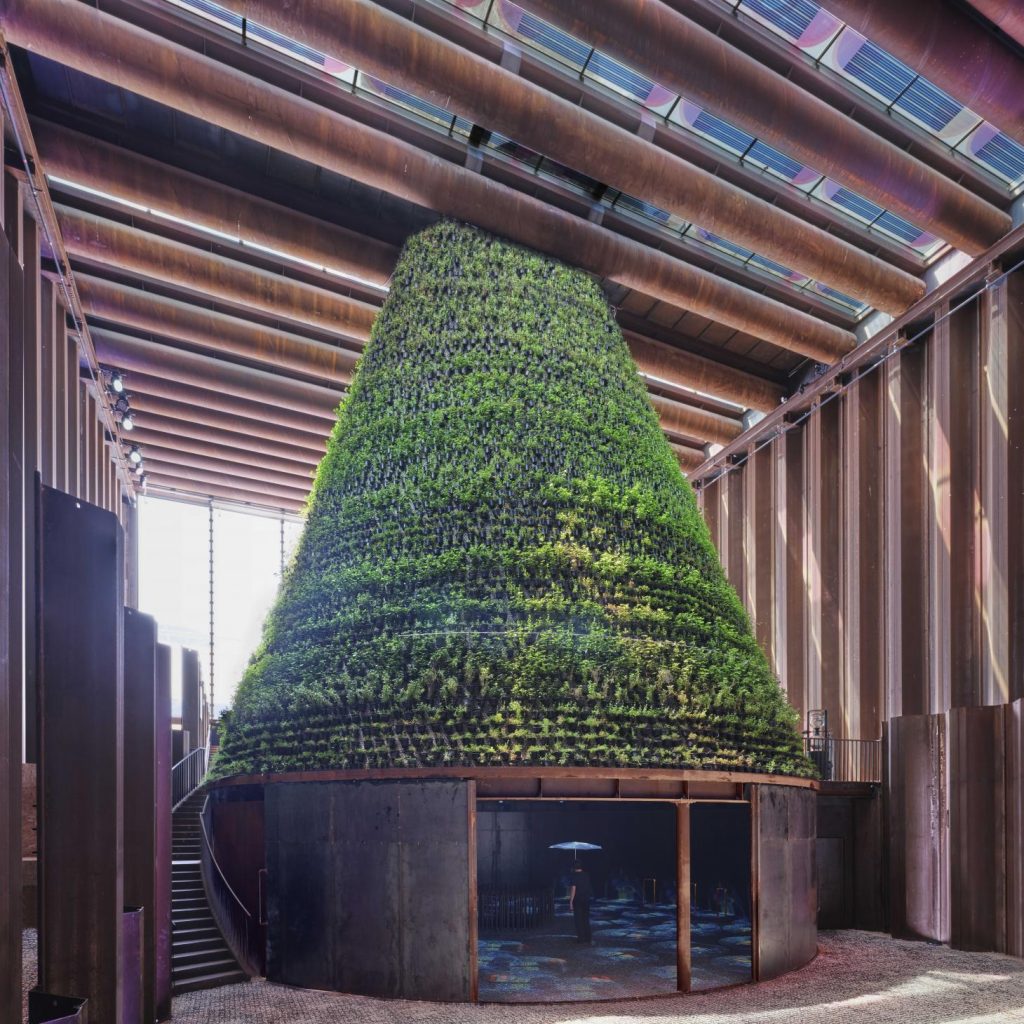
A ‘leave-no-trace’ philosophy defines the Dutch pavilion with its own enclosed water, energy and food system that extracts water from the desert air and uses it to irrigate an 18-metre-high food cone covered with edible plants. Think 9,000 edible plants, including asparagus, basil and mint. Inside, a dozens of kilos of oyster mushrooms grow and are harvested daily.
The Japan Pavilion by Yuko Nagayama
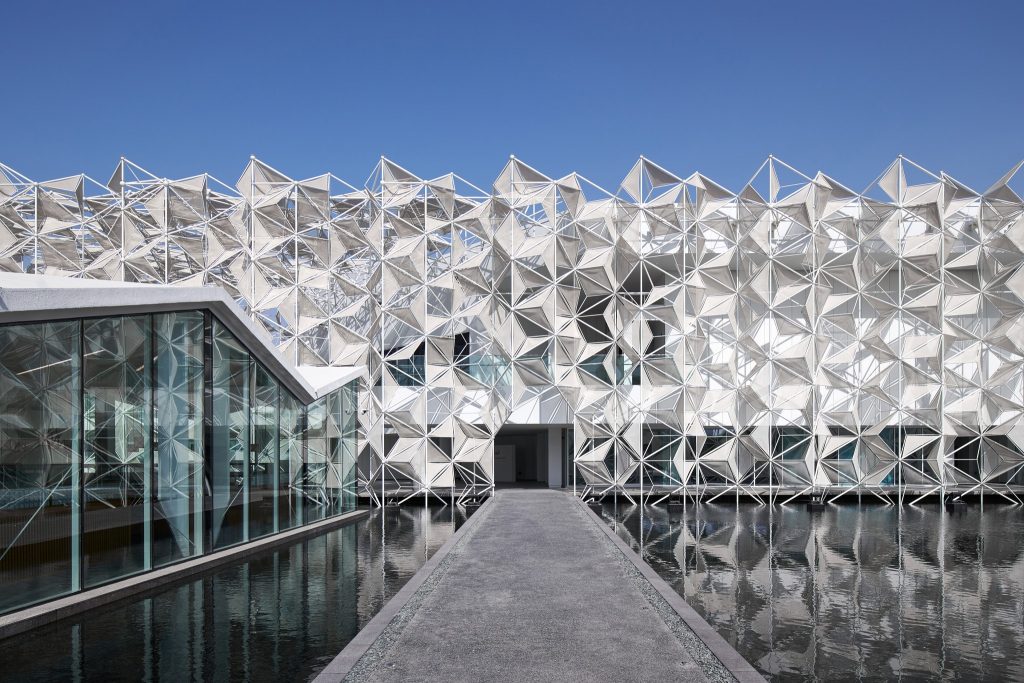
Inspired by origami, the white exterior of the Japan Pavilion uses natural airflow to cool the building. Bringing together arabesque and origami motifs, it represents the longstanding historical ties between Japan and the Middle East and takes in traditional energy-saving systems from both cultures. One of Japan’s best known women architects, Nagayama added an expanse of water in front of the pavilion to further cool the area and reflects the dimensional facade. And in a nice finishing touching, every visitor is given a single virtual flower, a symbol of hospitality.
The Singapore Pavilion by WOHA

Described by designers as an “oasis in the desert”, the Singapore Pavilion was built around three plant-covered cones that contain a series of exhibition spaces. Inside, series of walkways that pass through hanging gardens leading up to the cafe and auditorium. The pavilion aims to demonstrate how planting can be used to reduce the impact of building in the Dubai climate and features a water desalination system that will treat 40 cubic metres of water each day to irrigate the plants.
Discover the Singapore Pavilion.
The UAE Pavilion by Santiago Calatrava
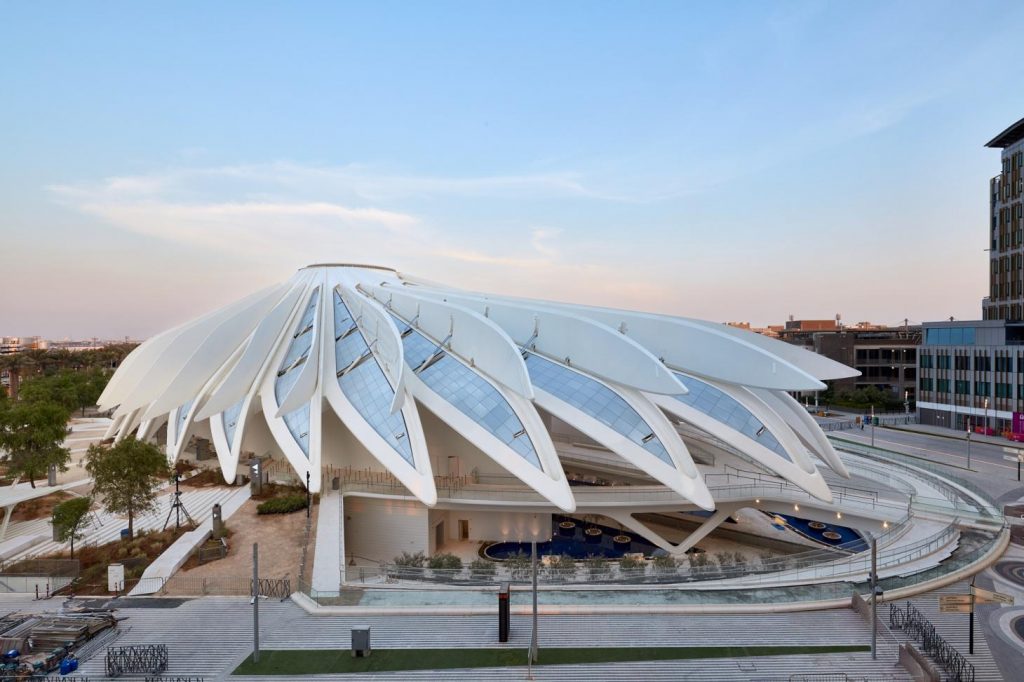
The host’s pavilion was penned by the Swiss-Spanish architect Calatrava as an ode to the nation’s pioneering spirit. Carbon fibre eagle wings dominate the structure and can open and close to shelter the roof panels in under three minutes. Inside, the 15,000-square-meter pavilion is a sphere-shaped void that serves as an auditorium with a capacity of 200.
India Pavilion by CP Kukreja Architects
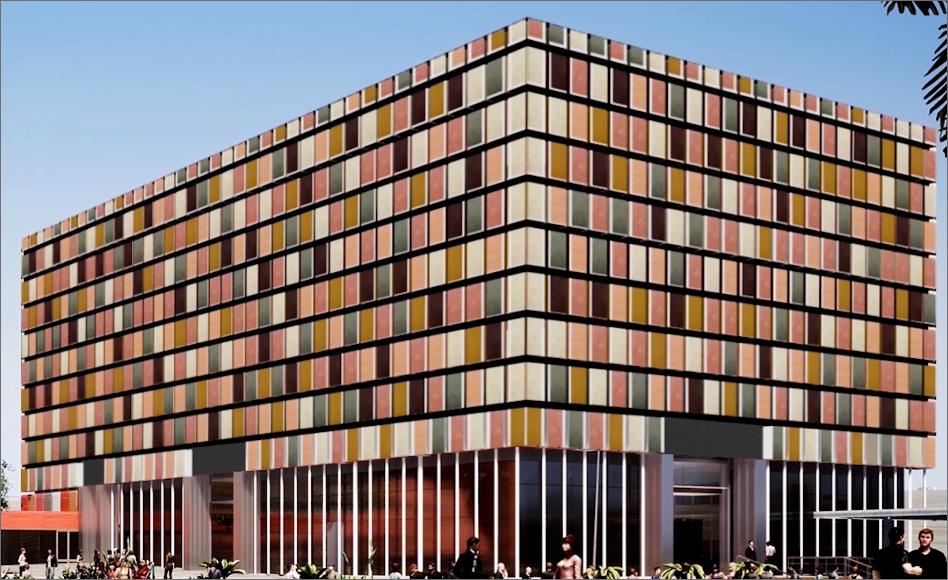
A feat of kinetic architecture, the Indian Pavilion features 600 individual blocks that reconfigure throughout the day to tell stories of the country’s past, present and future. Dedicated to the country’s cultural diversity, entrepreneurial excellence and tech prowess, the blocks tell 75 stories that span India’s history, geography and literature. In the evening, the facade transforms into a sound, light and projections show.
Lead photo: The UK Pavilion. Image courtesy of Es Devlin.
You Might also Like
